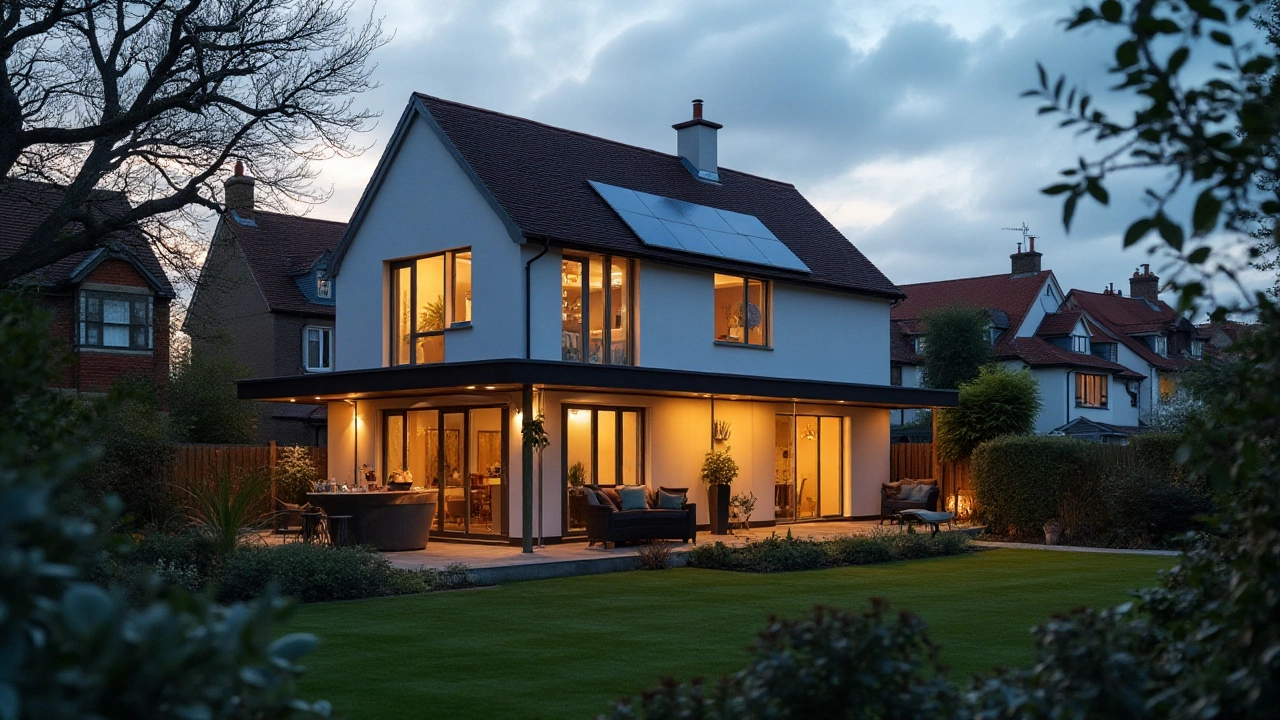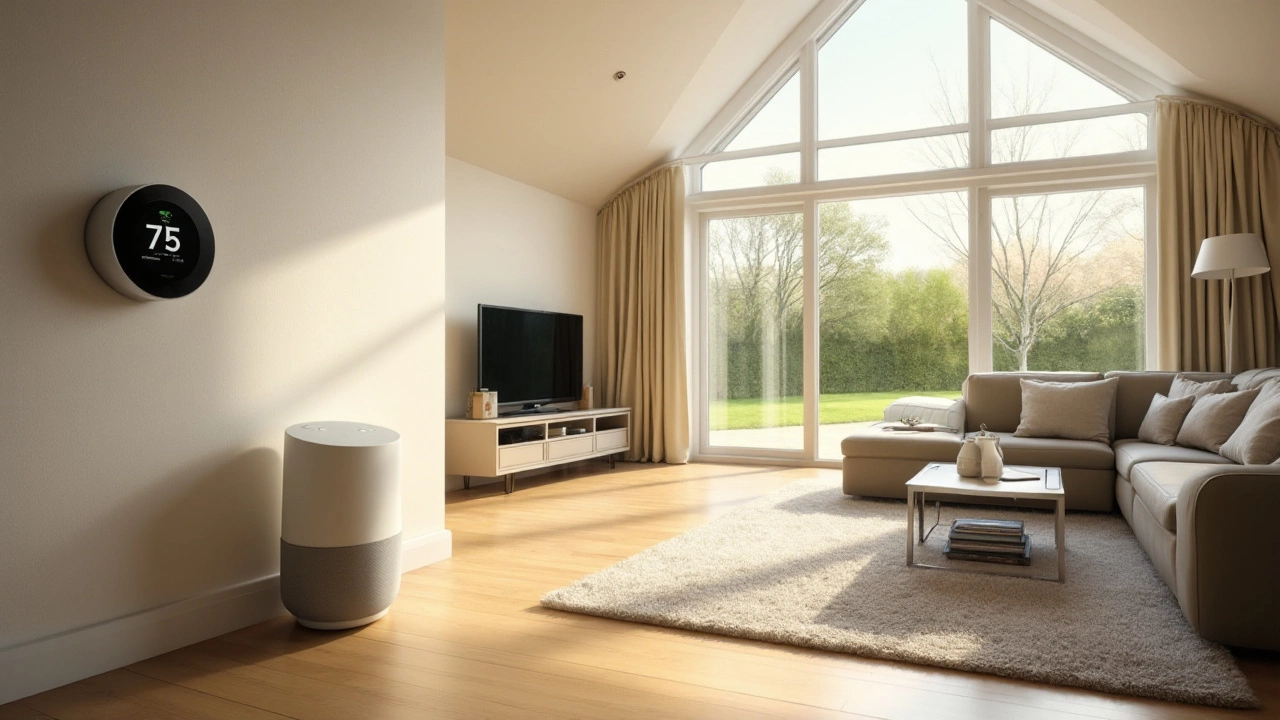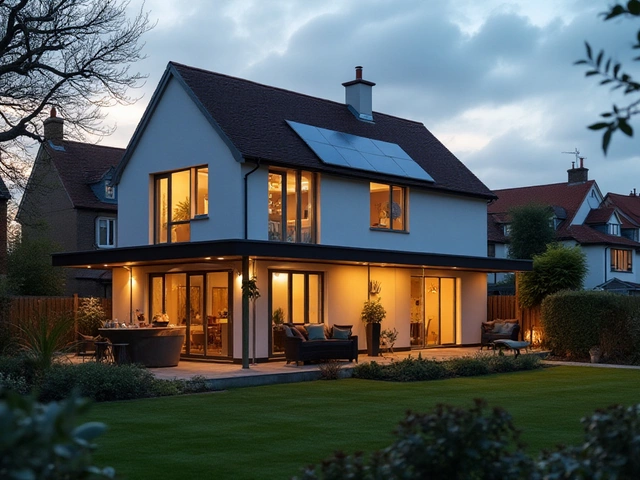Essential Features of Modern New Builds

Stepping into the domain of new builds is like walking into a future-ready world tailored to modern-day living. These homes are crafted with a focus on efficiency, technology, and lifestyle, blending contemporary aesthetics with practicality.
With the environment in mind, new builds tend to feature energy efficiency at their core, not just as a selling point but as an essential component of responsible living. Attention to detail in design ensures that these homes can accommodate a wide range of preferences and styles.
Additionally, the integration of smart technology has turned these houses into intelligent spaces that enhance the way we live day-to-day. Exploring a new build today means exploring a space that aligns with both our current and future needs.
- Energy Efficiency and Sustainability
- Cutting-edge Technology and Smart Homes
- Modern Design and Customization
- Community and Lifestyle Benefits
Energy Efficiency and Sustainability
When it comes to new home features, energy efficiency isn't just a buzzword—it's a transformative approach reshaping the future of housing. In new builds, energy efficiency is seamlessly woven into the fabric of design, construction, and operation. This approach is not merely about reducing utility bills, though it certainly does that, but about promoting a healthier planet and ensuring that homes align with the evolving priorities of today's discerning homeowners. Energy efficient homes are typically equipped with advanced insulation, high-performance windows, and cutting-edge heating, ventilation, and air conditioning (HVAC) systems designed to minimize energy loss. Such elements are vital in creating a controlled environment that maintains comfort without excessive energy consumption. These innovations also contribute to a more stable indoor temperature, reducing the need for constant heating or cooling.
Beyond these features, new housing developments often include Energy Star-rated appliances and LED lighting, which significantly reduce a household’s energy footprint. Today's builders are also increasingly integrating renewable energy sources such as solar panels, which can supply a substantial amount of a home’s energy needs. Even the positioning of the home can be optimized to take advantage of natural light and reduce dependence on artificial lighting. According to the U.S. Department of Energy, homes built to today's energy codes are about 60% more efficient than those built in the early 1990s.
As the renowned environmentalist Lester R. Brown once said, "The market for improving energy efficiency is so vast that the potential benefits are almost limitless."This statement rings truer than ever as households start seeing tangible savings reflected not only in their pockets but in the broader environmental health.
A crucial component of sustainability in construction trends is the incorporation of sustainable materials. Modern new builds often feature sustainably sourced materials, such as bamboo flooring and reclaimed wood, which reduce the environmental impact associated with construction. These materials are not only eco-friendly but also contribute to the homes' aesthetic appeal, offering a unique and natural touch that resonates with many prospective buyers. Builders are increasingly mindful of reducing waste during the construction process, utilizing recyclable and reusable materials, and employing techniques that limit environmental disruption. This commitment to sustainability extends beyond the build itself and into the communities where these homes reside. Many developers create green spaces and parks that enhance the local ecosystem and provide residents with access to nature, which is a significant lifestyle benefit for today's environmentally-conscious buyers.
An interesting trend in modern builds is the use of smart home technology to enhance energy management. Smart thermostats, for instance, learn the habits of their users and adjust settings automatically to maintain optimal energy use without sacrificing comfort. Water-efficient fixtures and irrigation systems also play a critical role, conserving one of our planet's most precious resources while maintaining beautiful landscapes and gardens. By leveraging technology, new builds not only offer convenience but provide real-time feedback on energy consumption, helping homeowners identify areas for improvement. This integration of technology and sustainability is not only saving resources but is paving the way for future housing practices that prioritize energy efficiency and environmental stewardship as core values.

Cutting-edge Technology and Smart Homes
New builds today are often synonymous with cutting-edge technology, a feature that sets them apart in the rapidly evolving housing market. Incorporating smart home technologies, these properties offer a glimpse into the future of living, providing comfort and convenience that traditional homes struggle to match. From smart thermostats to automated lighting systems, new homes are equipped with technologies that can significantly reduce energy consumption, enhance security, and provide peace of mind for homeowners.
Imagine a home where you can control the temperature from your phone while lounging on a distant beach, or watch your favorite show in one room and seamlessly mirror it to another. This is not just convenience but a redefinition of everyday living. Products like Google's Nest and Amazon's Alexa have become staples, fundamentally changing how we interact with our living spaces. These technologies do not only cater to gadget enthusiasts; they serve practical needs for all age groups, including helping seniors maintain independence with features like fall detection and emergency assistance.
The integration of advanced security systems is another crucial aspect of new builds. Homeowners can enjoy remote monitoring, smart locks, and motion detectors that notify your phone of any unusual activity. A 2023 industry report highlighted that 75% of new homes are now equipped with smart security features, underlining a growing demand for such technologies. These systems provide a deterrent to potential intruders and, in many cases, reduce insurance costs.
Incorporating smart technology can also significantly contribute to energy efficiency, making modern build essentials both eco-friendly and cost-effective. Automated blinds that adjust based on sunlight, and smart irrigation systems that conserve water, illustrate how technology optimizes resource use. According to the U.S. Department of Energy, homeowners save an average of 15% on heating and cooling bills annually with smart thermostats. Such innovations exemplify new housing developments' commitment to sustainability.
Aside from functional benefits, these technologies also cater to entertainment and luxury. Interactive sound systems, smart mirrors, and voice-activated assistants transform the way we experience leisure within our homes. With the rise of home offices, having tech-savvy spaces that offer seamless integration with work tools is a significant draw for buyers. Interestingly, a survey from a leading real estate group noted that 68% of potential buyers rated smart technology as a crucial factor in their purchasing decision, emphasizing its value in modern construction trends.
As technology continues to advance, the future of smart homes will likely include even more sophisticated features, such as artificial intelligence capable of learning homeowners' preferences and behaviors to anticipate needs. This progression is not just about adding gadgets but creating cohesive ecosystems where every device communicates, enhancing the harmony of home life.

Modern Design and Customization
Modern homes have embraced a distinct edge in aesthetics, often marrying sleek minimalism with cozy elements to create environments that are both functional and inviting. The essence of modern design is evident in the open floor plans that seamlessly connect living spaces, fostering an atmosphere of unity and engagement. A thoughtful mix of materials such as glass, steel, and natural wood features prominently, providing a tactile experience that enriches the overall ambience. New builds have leveraged these designs to cater to the diverse lifestyle needs of today’s homeowners. As a testament to their adaptability, many homes offer options for personalization, enabling residents to express their unique personalities through their living spaces.
The flexibility in customization has encouraged home buyers to participate actively in the design process, collaborating with architects and interior designers. Options can range from selecting the color palette to deciding on the arrangement of communal areas. With sustainable living becoming more prevalent, there is a growing demand for design elements that prioritize eco-friendly choices, such as the installation of energy-efficient windows and heating systems. A survey by the National Association of Home Builders found that more than half of potential buyers consider energy-efficient features a must-have in their new homes. This trend is reflected in how new builds approach sustainable design, integrating solar panels and efficient insulation seamlessly into the architecture.
"Today's homeowners are keen on forging emotional connections with their spaces. It's not just about aesthetics; it's about creating habitats that enhance quality of life," noted renowned architect Frank Marino in a recent interview.
As the housing market evolves, the role of technology in new home features cannot be ignored. Smart home integrations have redefined customization, allowing homeowners to control lighting, security, and climate from a simple touch on their smartphones. This kind of tech-savvy design not only adds convenience but also reflects a commitment to innovation and sustainability. Smart thermostats, for instance, can learn occupants' schedules to optimize heating and cooling, thereby reducing energy consumption. The harmonious blend of modern design with customization means these homes are more than just shelters; they are reflections of the occupants' tastes and values.
In terms of structural design, many builders now offer pre-designed packages that can be further tailored to individual tastes. These packages often include a set framework with options for finishes, fixtures, and external features like landscaping. In a 2022 study, it was found that buyers who were given choice in their home’s design were up to 70% more satisfied with their purchase than those who opted for ready-made homes. The satisfaction is attributed to the sense of ownership felt when they contribute to design decisions, making each house a personal expression of style and comfort.
While customization brings numerous advantages, it is worth noting that it also requires careful planning and consideration. Homeowners need to balance personalization with future-proofing their homes to accommodate changing needs, such as family expansions or evolving lifestyle preferences. This foresight ensures that modern designs are not only appealing today but remain functional and relevant in the years to come. Thus, embracing modern customization is about striking a balance between trend and timelessness, ensuring each home tells the distinctive story of its inhabitants.

Community and Lifestyle Benefits
For anyone considering a new home in a newly constructed development, the allure often extends beyond the walls of the house itself. These communities are typically designed with a holistic approach, creating a complete living environment that fosters a sense of belonging and well-being. Modern housing developments emphasize the importance of shared spaces and amenities that promote interaction and an active lifestyle. For instance, you might find community parks, walking trails, or even dedicated fitness centers and swimming pools, allowing residents to maintain a healthier lifestyle without having to travel far.
Many modern build essentials focus on creating a neighborhood feel that harkens back to times when it was common to know your neighbors. Developments might include social clubs or community-run programs that aim to bring residents together, from book clubs to gardening groups. These initiatives not only provide entertainment and learning but also cultivate connections and friendships that enrich lives. According to the National Association of Home Builders, about 58% of new developments focus on creating community-oriented spaces to enhance social interaction and improve the quality of life.
The convenience of nearby amenities is another considerable benefit. Often, new builds are strategically located near essential services like schools, shopping centers, and medical facilities. This reduces the hassle of long commutes and makes everyday life more manageable. Public transport links are frequently integrated into these developments, catering to the needs of a modern, dynamic population looking to cut down on travel time and environmental impact. In certain cases, developers have even included commercial spaces within the development, offering office and retail opportunities right within the vicinity.
Moreover, the design of these spaces significantly contributes to the safety and security that is increasingly becoming a priority for homeowners. Gated communities, security patrols, and advanced surveillance technologies are often employed in new builds, ensuring peace of mind for residents. "It's not just about the property you own, but the environment you live in," says John Burns, real estate consultant and author. "Safety and convenience are just as critical as the design and architecture of your home."
As these modern build essentials include community planning as part of their core principle, the investment goes beyond brick and mortar. Homeowners are not simply buying a house; they are investing in a comprehensive lifestyle that supports their personal and collective growth. Whether it's through yoga classes on the community lawn or art exhibitions organized in local galleries, residents can expect a vibrant and supportive atmosphere. This sense of community can be a decisive factor for potential buyers, highlighting the shift towards more connected, interactive living environments that so many new builds strive to achieve these days.
